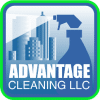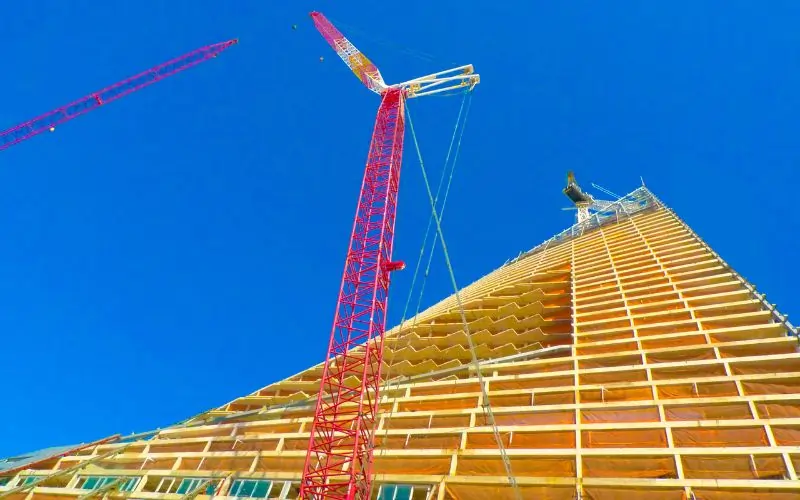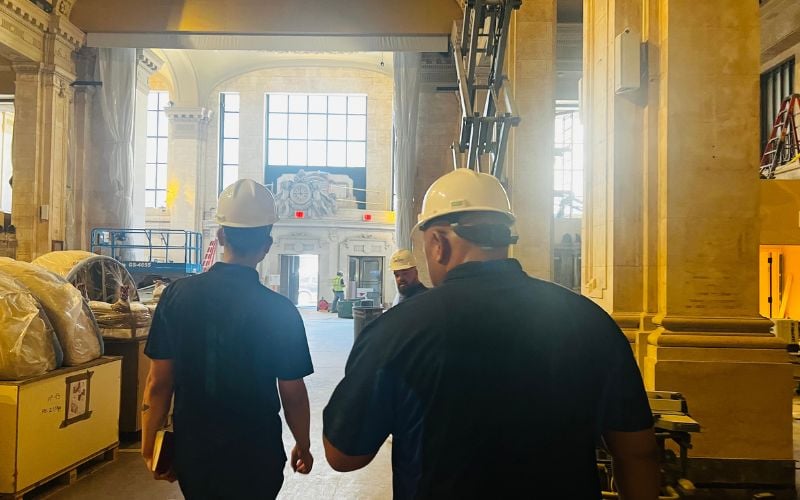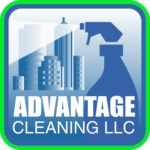When you’re turning over a high-rise project in Manhattan, the final cleaning phase isn’t just about dust and debris—it’s about compliance, closeout, and client delivery. Hiring post construction cleaning services in NYC ensures that construction sites are immaculate and ready for handover, alleviating stress and budget concerns associated with cleanup after renovations.
For construction project managers, developers, and general contractors, post-construction cleaning is a critical path activity that affects everything from Certificate of Occupancy (CO) sign-off to first impressions for brokers and tenants.
High-rise buildings are fundamentally different from low- or mid-rise structures in how they’re cleaned, accessed, regulated, and inspected.
This article outlines why—and what it means for B2B project teams operating in NYC and other dense, union-driven urban markets.
For those seeking expert-level support, Advantage Cleaning offers specialized high-rise post-construction cleaning services in NYC tailored for commercial, luxury, and mixed-use towers.
What Sets High-Rise Buildings Apart (and Why Construction Cleaning Is Radically Different)
1. Vertical Scale and Structural Complexity
A high-rise—typically defined as a building over 75 feet or 7+ stories—is not just taller. It’s vertically layered infrastructure with complex mechanical, electrical, and safety systems distributed across dozens of floors. Cleaning teams must move people, equipment, and materials efficiently across multiple levels using freight elevators, service lifts, and staging areas—adding logistical complexity not found in low-rise structures. Additionally, dealing with construction residues in high-rise buildings presents a significant challenge, requiring specialized cleaning services to ensure the area is safe and ready for occupancy after renovations or construction work.
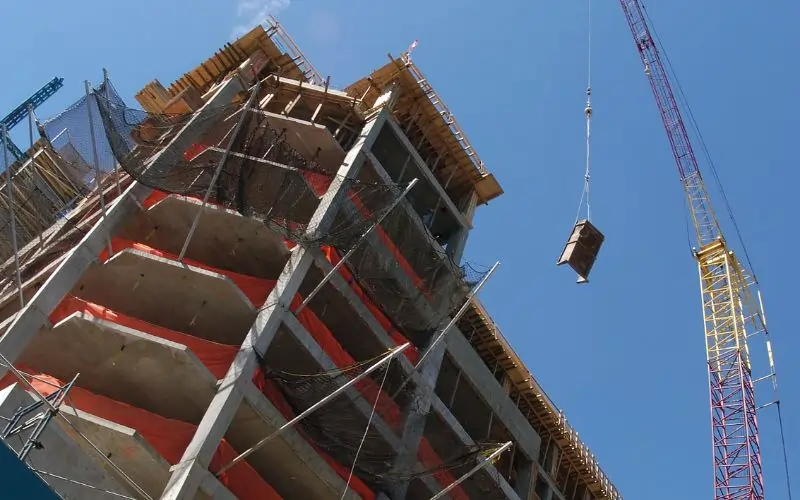
2. Access Restrictions and Specialized Equipment
Unlike a mid-size office or retail buildout, high-rise cleaning often requires:
- Suspended scaffolds or swing stages for exterior glass and façade cleaning
- Fall protection systems for rooftop and parapet work
- Specialized tools, such as HEPA filter vacuums, for effective debris removal and dust control
- Coordination with hoist schedules or limited elevator access, especially during partial occupancy
Cleaning at height introduces risk and regulatory scrutiny—every task above six feet requires OSHA-compliant fall protection.
3. Intensified Compliance with NYC Safety Regulations
Manhattan high-rises are built under one of the strictest building codes in the U.S. Compliance involves:
- Local Law 196 (mandatory safety training)
- DOB and FDNY sign-offs for egress and fire code
- DEP dust and emissions control, critical when cleaning silica dust or post-GC residue
Cleaning here isn’t about tidying up—it’s about passing code inspections that determine occupancy, insurance validation, and financial closeouts. Adhering to safety regulations is especially crucial on a construction site to ensure a safe and compliant environment.
4. Construction Density and Trade Overlap
High-rises in NYC are built on tight construction timelines and dense labor staging. Cleaning crews must operate:
- In parallel with punch list work
- Around moving equipment and trades finishing installation
- While avoiding contamination of “finished” zones
This means cleaning must be phased by floor, system, or timeline milestone—a linear, “start-to-finish” clean isn’t possible in vertical buildings. Additionally, ongoing maintenance is crucial to ensure that these high-rise buildings remain consistently clean and operational after the initial construction phase.
5. Interior and Exterior Construction Cleaning Are Separate Scopes
One of the most misunderstood realities of high-rise construction cleaning is this: façade cleaning is not janitorial work at height—it’s building maintenance engineering.
Exterior post-construction cleaning, including window cleaning, especially in Manhattan, is:
- Performed by separate, often unionized crews with high-angle certifications
- Conducted using swing stages or roof-rigged scaffolds
- Scheduled via DOB and subject to FDNY and weather restrictions
Interior crews may deliver spotless lobbies, but glass polishing 80 stories up is a specialty operation, requiring its own vendor, compliance plan, and sequencing.
6. Reputational Exposure in a Luxury Market
In New York, your high-rise doesn’t just open—it debuts. Whether it’s a condo tower in Hudson Yards, a branded residence off Park Avenue, or a LEED-certified office building in FiDi, first impressions are currency.
- Smudged windows undermine architectural design
- Grout haze in a $10M unit stalls closings
- Dust in an elevator cab erodes the building’s luxury promise
This is why high-rise construction cleaning is not about minimum compliance. It’s about flawless execution, brand alignment, and market readiness. Restoring surfaces to their original shine is crucial to maintaining the aesthetic quality that first impressions demand.
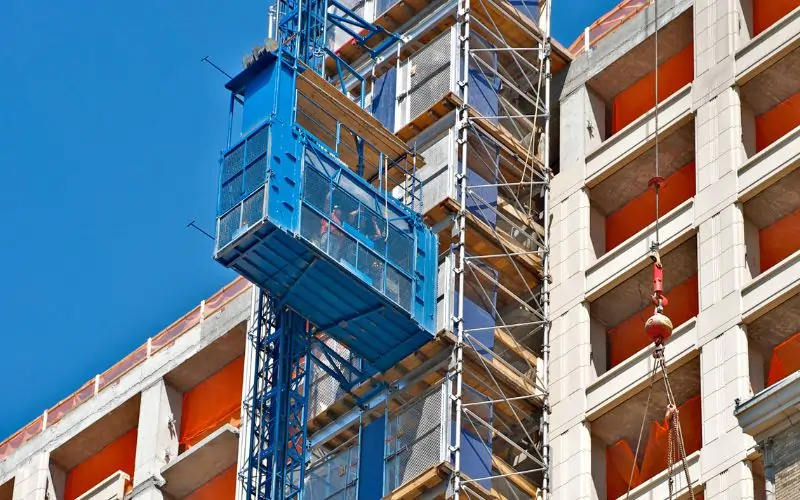
So How Does Post-Construction Cleaning Change?
| Aspect | Standard Low-Rise Building | NYC High-Rise Building |
|---|---|---|
| Access | Walkable, staged onsite | Requires swing stages, elevator hoists |
| Schedule | Linear, isolated | Phased by zones/floors, integrated with GC |
| Tools | Basic janitorial supplies | Right tools such as industrial vacuums, fall arrest gear, HEPA-filtered vacuums, and glass-safe scrapers |
| Regulation | Local health & safety | OSHA, DOB, DEP, FDNY, Local Law 196 |
| Labor | General labor crews | Union/Non-union split across scopes |
| Risk | Low-height hazard | Fall, air quality, high-angle operations |
| Client Expectation | Clean and functional | Flawless, luxury-grade, brand-defining |
Integrating Cleaning into the Critical Path Schedule
Post-construction cleaning for high-rises isn’t a standalone phase—it’s a milestone embedded in the project’s critical path. Construction managers must treat cleaning like any other scoped trade: it requires deliverables, staging coordination, access planning, and timed execution. The complexity of the cleaning job in high-rise buildings demands specialized expertise to ensure thorough and safe cleanup.
Zone by zone turnover
Cleaning must align with punch list sign-offs and phased completion (e.g., core, model units, lobby).
It is crucial to prepare each space for occupancy, ensuring they are clean, safe, and welcoming after construction or renovation activities.
Coordination with trades
Flooring, millwork, and HVAC crews may still be active. Cleaning must follow closely after construction work, often within 24–48 hours.
Elevator use planning
Freight elevator time is a finite resource; cleaning vendors must be scheduled like any high-demand trade. Coordination among the cleaning team is crucial to ensure efficient use of this limited resource.
Vendor Coordination: Managing Internal vs. External Crews
A full-building clean requires multiple scopes—interior detail cleaning, debris removal, and exterior façade polishing, often necessitating a professional cleaning service. These may involve different vendors, licenses, or union jurisdictions.
Interior cleaning process
Interior cleaning crews handle unit turnover, lobby presentation, and corridor readiness. Additionally, fixture cleaning, including wiping down appliances, light fixtures, and electrical panels, is essential in maintaining overall cleanliness.
Exterior cleaning
Exterior cleaning vendors manage post construction window cleaning, glass polishing, pressure washing, and swing stage rigging.
Clear vendor boundaries, shared staging logistics, and a unified cleaning schedule are essential to prevent site overlap, delays, and compliance gaps.
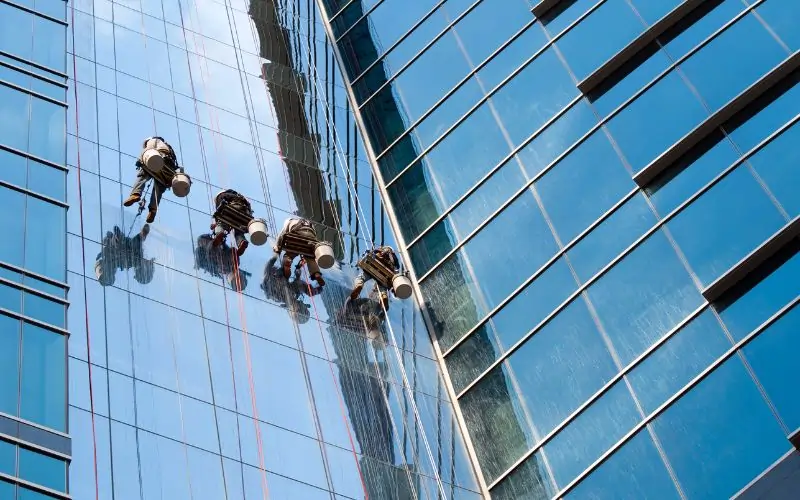
Union and Labor Structure: NYC Considerations
On union-controlled sites, specific cleaning tasks may fall under defined trade agreements. Labor friction can emerge when scopes blur. Compliance with labor agreements is particularly crucial for construction companies to ensure smooth operations and adherence to industry standards.
Façade cleaning
Facade cleaning typically involves unionized, scaffold-certified labor (e.g., IUPAT).
Additionally, cleaning interior windows is crucial to ensure spotless results, especially for property managers and contractors in New York City before final walkthroughs after extensive renovations.
General cleaning
General post-construction cleaning may fall under SEIU or local labor crews.
Ensure your post-construction cleaning vendors are labor-compliant and trained to work within NYC’s union context. Misaligned labor scopes can delay your turnover. Additionally, remember to include cleaning light fixtures as part of the general cleaning process to ensure a comprehensive and effective clean.
Cleaning for CO Readiness: Inspections, Egress, and Fire Code
The DOB, FDNY, and DEP all play a role in sign-off for occupancy. Post-construction cleaning is integral to meeting inspection standards:
- Egress pathways must be clear, dust-free, and unobstructed.
- Mechanical rooms require full dust-out and visible floor clearance.
- Fire-rated areas must not be contaminated by drywall debris or construction residue.
- Glass and reflective surfaces must be streak-free for design reviews.
A missed clean can cost a rescheduled walkthrough and delay the CO—putting lease starts or closings at risk. It is crucial to remove construction residue to meet inspection standards.

Commercial Post-construction cleanup
A Higher Grade of Quality for Construction Managers
Construction Cleaning in CONNECTICUT
Construction Waste Handling and Environmental Compliance
In high-rise projects, construction waste isn’t just a byproduct—it’s a regulated material stream that must be managed carefully. NYC’s Department of Sanitation (DSNY) and the Department of Environmental Protection (DEP) have strict requirements for the disposal of drywall, masonry, glass, and chemical residues generated during both construction and cleaning.
Proper disposal of construction materials is crucial to ensure a safe and clean environment before moving into a newly built home.
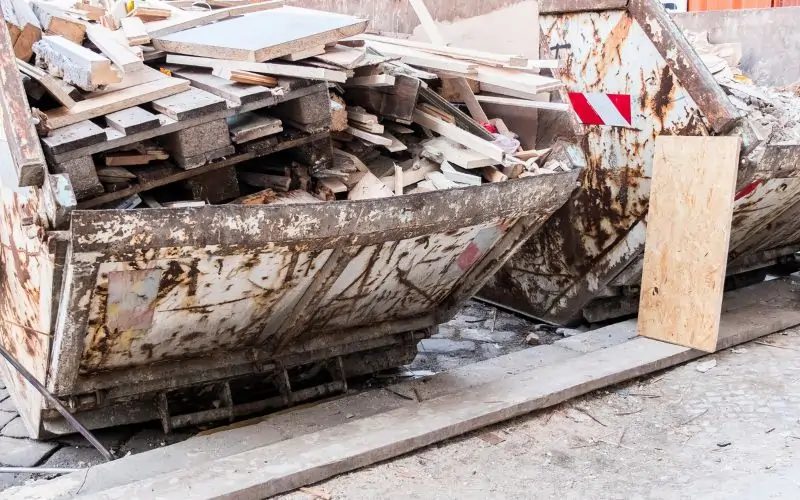
Debris Must Be Sorted
Under New York City regulations, all construction debris must be sorted into recyclable and non-recyclable streams. Failure to separate waste such as wood, metal, and gypsum board can result in fines and violations.
Additionally, thorough construction cleanup is essential to ensure high-quality standards and efficient management of the cleaning process amidst the complexities of construction sites.
Silica Dust Containment Is Critical
The DEP and OSHA require silica dust generated during construction to be contained and removed using HEPA-filtered vacuums or wet methods. HEPA filter vacuums are crucial for tackling fine dust and residues, ensuring thorough cleaning in newly constructed or remodeled spaces. Post-construction cleaning must address residual dust to prevent air quality violations and health hazards.
Waste Staging Requires Coordination
Construction waste must be staged in designated areas and removed through coordinated use of loading docks and freight elevators. Improper staging can interfere with site logistics and delay turnover. Proper waste management is crucial in a construction or renovation project to ensure compliance and maintain a clean, safe environment.
Hazardous Waste Must Follow Federal Guidelines
Items such as solvent-soaked rags, adhesives, or caustic cleaners must be identified and disposed of according to the Resource Conservation and Recovery Act (RCRA) standards. Crews must be trained in handling and documenting hazardous waste compliance.
Cleaning crews must understand these requirements to avoid fines, stop-work orders, or failed site closeouts. It is also crucial that the cleaning service is fully insured to ensure safety and compliance with all regulations during hazardous waste disposal.
Environmental Regulations For Post-Construction Cleaning
New York City and State have implemented progressive environmental regulations that impact how cleaning operations—especially post-construction—are conducted:
- New York State Education Law Section 409-I mandates green cleaning products for public and private schools, reflecting statewide environmental priorities.
- The New York State Green Cleaning Program, managed by the Office of General Services (OGS), defines approved environmentally sensitive cleaning products and provides usage guidance.
- NYC Environmentally Preferable Purchasing (EPP) Laws (including Local Laws 118–123 of 2005) guide how public agencies must procure eco-friendly, low-toxicity cleaning solutions and supplies.
While these programs specifically govern public institutions and city-funded projects, they establish best practices increasingly adopted by private developers, especially those pursuing LEED or WELL building certifications.
Incorporating eco-conscious cleaning practices not only reduces environmental footprint—it also enhances occupant health, improves indoor air quality, and contributes to sustainable building performance ratings.
Final Word: Clean Isn’t Cosmetic—It’s Compliance
In the high-stakes world of NYC high-rise construction, post-construction cleaning is not a cost center—it’s a compliance checkpoint, a closeout catalyst, and a client-facing deliverable. Integrate cleaning early. Coordinate vendors precisely. And demand crews that understand both construction and presentation.
Advantage Cleaning partners with GCs, developers, and facility owners across NYC to provide specialized high-rise post-construction cleaning services built for schedule certainty, compliance confidence, and first-impression excellence. We maintain the highest standards through custom checklists and regular inspections, ensuring every task meets our defined quality benchmarks to provide clients with a pristine space after construction.
FAQ: Understanding Key High-Rise Compliance Terms
Worth reading
Challenges Facing Commercial Construction Clean Up & How To Ensure Higher Quality
As a construction project manager, you already juggle an overwhelming number of tasks — from schedules…
